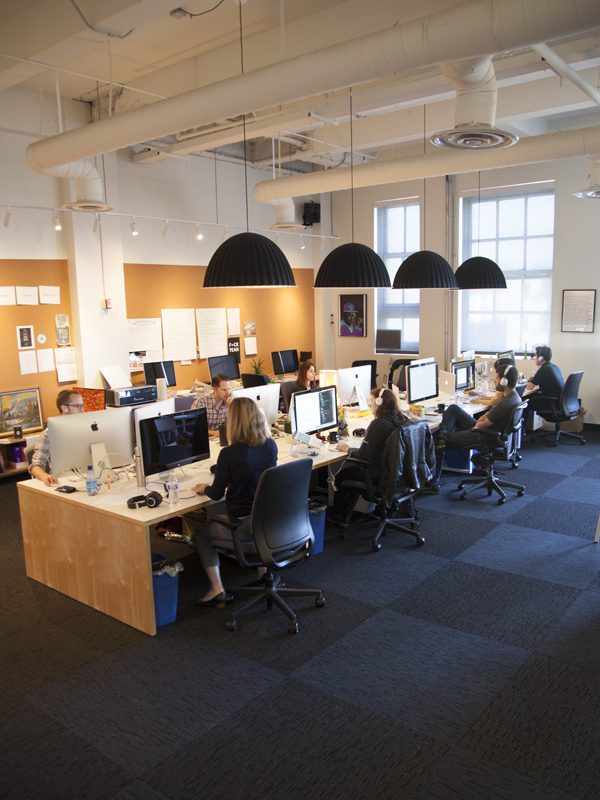Insider Look: A Seat at Zendesk's Longtable

Google and Apple fuel many standards and trends in Web communities, but when they really started to take design seriously, it led to the trend of heavily design-led software. Zendesk Chief Creative Officer Toke Nygaard says that as money started flowing back into startups, these companies began building their own design teams. As a result, there has been a drain on the talent pool for traditional external agencies as more and more designers move in-house.
This is why design and tech has moved from "outsider to insider" and Nygaard found a need to create a "longtable approach" to having a successful in-house team, wherein his team works at a single communal table. This table supports a creative community environment that ensures everyone is informed, has influence, works collaboratively and takes on cross-functional responsibilities.
This approach has played a crucial role in the success Nygaard's team has had with bringing life and sex appeal to a traditionally dull category - business software. It's a testament to the longtable approach that Nygaard's been able to scale the company's personality and playfulness as they've grown to 350-plus employees with more than 30,000 customers.
Nygaard walks Website Magazine through his experience, what's worked, what failed and more.
How was the concept of "longtable approach" born?
Toke Nygaard, Zendesk: I spent 10 years building a small creative team in my previous company, Cuban Council. We were only 12 people total, so we'd naturally be very close to each other. Through that experience, I learned that there were real benefits to being in the same space together and that working with a remote team is a real challenge. So, at Zendesk I try to get as many designers to work at headquarters as possible. I want to leverage the fact that we cohabit the same space, so we placed everybody around the same table, very much inspired from way many agencies would do this.
Why was it important for you to create and maintain this "longtable approach" to design?
Nygaard: I'm taking advantage of the fact that Zendesk is still in its "Silicon Valley teens" - our team is at a size where we can all fit around one big work station. It is extremely valuable that each individual has total transparency into what is going on in all creative nooks and crannies.
The UX team has insights into how the product is being packaged and branded, the video team knows all the new features inside out and our brand designers have given feedback on all aspects of the functionality of each feature developed for our core product. There is a tremendous amount of valuable knowledge and allows us to make sure our marketing and product designs are aligned and on brand.
This approach also makes sure we have designers who can assist cross-functionally, stretching their skills in other areas like iconography, photography, UX and concepting.
How does it differ from how design is approached at most companies?
Nygaard: Every startup and product I speak to does it differently, which is also quite exciting. But I think the more "modern" way of running a design team at a product-based company is to embed UX and UI designers with engineers and have your marketing designers report to the head of marketing, or outsourced entirely. I don't think any particular setup is right or wrong - I just know that for Zendesk, we take great advantage of our design team being one unit, and reporting straight up to our CEO. It makes for quick decision-making, and ultimately our designers are unified and less siloed.
The downside is that as an internal "gun for hire", you naturally take less ownership over parts of the product as you dip in and out. We are currently addressing this by assigning owners to become internal subject matter experts.
What specific Zendesk products/results have come out of this longtable approach?
Nygaard: A good example of how this approach has worked well for us is our latest iPad app launch. The app itself was designed between UX and engineering, but critiqued by the entire team. We have common brand tenets that are questioned every step of the way. Our brand team was able to come up with a launch concept, having a really deep understanding of the new product, which our video team then translated into a great launch video and product demo. We saved a lot of time not having to instruct an outside agency in our basic principles and the complex workings of our software.

(Zendesk design team working at the "longtable")

Subscribe to Our Newsletter!
Latest in Marketing








